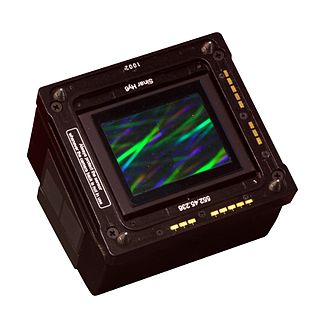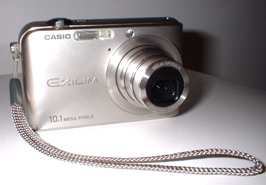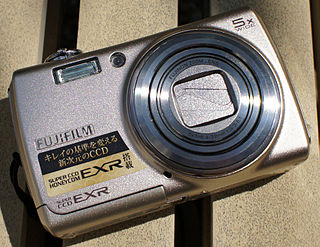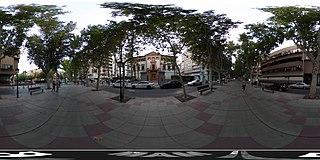This article may require cleanup to meet Wikipedia's quality standards. The specific problem is: Promotional content, poor formatting, excessive use of external links, listcruft.(August 2021) |
This article may require cleanup to meet Wikipedia's quality standards. The specific problem is: Promotional content, poor formatting, excessive use of external links, listcruft.(August 2021) |
The largest seamless photograph made in a single exposure was made using a Southern California jet hangar transformed into a giant camera. The most recent claim to the largest image stitched together was by the Canadian Museum of Civilization. [1]
On 3 August 2015, the longest photographic negative was measured 79.37 m (260.4 ft) wide. This negative was created by Esteban Pastorino Díaz (Spain) by driving 32.8 km (20.4 mi) on the 2nd Ring Road (Beijing). Esteban Pastorino Díaz also holds the previous record, a negative measured 39.54 m (129.7 ft) wide. He used a custom-built panoramic slit camera on 13 June 2010. The negative is a panorama of major streets in Buenos Aires, Argentina, captured by the slit camera while mounted on the roof of a moving car. [2]

On July 12, 2006, six photographers (Jerry Burchfield, Mark Chamberlain, Jacques Garnier, Rob Johnson, Douglas McCulloh, and Clayton Spada) unveiled what is currently the world's largest camera and photograph. [3]
The 3,552-square-foot (330.0 m2) photograph was made to mark the end of 165 years of film/chemistry-based photography and the start of the age of digital photography. It was taken using a decommissioned Marine Corps jet hangar (Building #115 at El Toro) transformed into the world's largest camera to make the world's largest picture. The hangar-turned-camera recorded a panoramic image of what was on the other side of the door using the centuries-old principle of "camera obscura" or pinhole camera. An image of the former El Toro Marine Corps Air Station appeared upside down and flipped left to right on film after being projected through the tiny hole in the hangar's metal door. The "film" is a 32 feet (9.8 m) by 111 feet (34 m) piece of white fabric covered in 20 gallons (75.71 liters) of light-sensitive emulsion as the "negative".
After exposing the fabric for 35 minutes the image was developed by 80 volunteers using a giant custom-made tray of vinyl pool liner. Development employed 600 gallons (2271 liters) of black-and-white developer solution and 1,200 gallons (4542 liters) of fixer pumped into the tray by ten high volume pumps. Print washing used fire hoses connected to two fire hydrants. [4]
The scene was originally produced on 6x6 cm transparency film shot with a Hasselblad 80mm lens in many overlapping sections. 80 rolls of film were used over several sites with this scene being finally chosen. The site is the estuary of Nasparti Bay at the base of the Brooks Peninsula on Vancouver Island, British Columbia. Shot[ clarification needed ] in 1987 or 1988 to be ready for the opening of the museum in 1989. The installation is actually two scrims of identical size, one behind the other in mirror image to give the viewers a 3-dimensional experience while walking beside the diorama.
Within the Canadian Museum of History, one wall of the massive Grand Hall is composed of a scrim covered by a photo of a forest. The photo is about 100 by 15 m (328 by 49 ft). [1]
The following are the digital photographs that have held the record for being the largest in terms of pixel count, beginning with the largest in chronological order (note: large digital images out of chronological order or lacking milestone significance are moved to acknowledgment section). Most instantes are digital image mosaics obtained via image stitching for interactive visualization (VR photos).
http://360gigapixels.com/prague_gigapixel_panorama_900K_2018/

Full size zoomable image Archived 2012-06-18 at the Wayback Machine
Full size zoomable image (requires Silverlight)
(Not a cropped image: the sides of the picture are not straight. The real picture is smaller with the black parts on the edge.)
Full size zoomable image [Link not working]
Paris 26 Gigapixels is an interactive image showing a view of the French capital and its famous monuments, from the Eiffel Tower to the Pantheon. It was shot from the Church of Saint-Sulpice by photographer Arnaud Frich using a CLAUSS RODEON VR Head HD panoramic head and 2 Canon 5D Mark II DSLR cameras with 300mm f4.0 lenses and two 2x tele converter (equivalent 600mm f8.0). The 2346 images of the project were then assembled using Kolor Autopano Giga software. The website was created using several technologies: Kolor Autopano Tour, KRpano and Microsoft Research's HDview. [15]
This image, when published in December 2009, was the largest fully spherical panoramic photo in the world. It is 192,000 pixels wide and 96,000 pixels tall. When printed, it is 16 meters (53 feet) long at regular photographic quality (300dpi). It was shot in early October 2009 from the top of the Zizkov TV Tower in Prague, Czech Republic in collaboration with Prague 3 town hall. Canon 5D MKII digital SLR camera and a 200mm lens were used. Hundreds of shots were shot over a few hours; these shots were then stitched together on a computer over the following few weeks. [16]

This is the first gigapixel image of any Indian city and this is the first and largest digital interactive image in India. This image is a panorama of 1456 individual shots stitched together. Shot with Canon 550D and Canon 400mm 5.6 lens and robotic panoramic head. Anyone can access the website and experience an interactive tour of Udaipur.
The 16.1 Gigapixel size was reached by HAL9000 Srl. The project "The Last Supper" was claimed to be the largest digital panoramic photo. It is a stitched photograph created merging 1677 shots from a single point into one photograph, each shot 12.2 Megapixel in size. Captured with a Nikon D2s Camera on a customized CLAUSS RODEON VR Head panoramic head.
The 13 Gigapixel size was reached by Gerard Maynard. The 2045 images were taken with a Nikon D2X with 300 mm lens mounted on a modified Peace River Studios PixOrb. The stitching and exporting was done automatically by Autopano Pro.
The 8.6 Gigapixel size was reached by HAL9000 Srl. The project Parete Gaudenziana was claimed to be the largest digital panoramic photo. It is a stitched photograph created by merging 1145 shots from a single point into one photograph, each shot 12.2 Megapixel big. [17]
The 7.74 Gigapixel size was reached by Peter Miko. The 798 images were taken with a Canon EOS-1D X Mark II and Canon EF 100-400mm f/4.5-5.6L IS II USM Lens + Canon Extender EF 1.4x III.
The previous record belonged to Netherlands Organisation for Applied Scientific Research. One of these attempts was by Dutch company TNO. The project dubbed "Gigapix" was claimed to be the largest digital panoramic photo, although it is a stitched photograph by merging hundreds of small sections into one photograph. The photograph is 78,797 by 31,565 pixels large. It was taken on a Nikon D1X camera. [18] [19] [20]
A preview of the image can be seen at:
Gigapixel: Zug, Switzerland
Ralph Welling Gigapixel Images
Size 3,9 Gigapixel
September, 2017
The previous record belonged to Max Lyons of Gigapixel Images. He had at one stage claimed to have created the largest photo. It consisted of 196 images that were stitched together. Since then this claim has been surpassed by that of the TNO attempt. TNO's Gigapix is 2.5 times larger. [21]
The previous record may have belonged to Jim Hellemn of Blue Ocean Art. In 1999, Hellemn created a 1.77 gigapixel underwater photocomposite image, which was designed to facilitate life-size reproduction of a 20 ft high by 70 ft wide section of Bloody Bay Wall, a vertical coral reef wall in the Cayman Islands. The image consisted of over 300 images that were manually stitched together from 4000ppi drum scans of Fuji Provia 100 transparency film. To make the image, a grid of 280 frames was photographed with 30% overlap to accurately cover the reef wall with full-spectrum light revealing the natural color and detail of the reef. Additional frames of marine life carefully photographed in the same grid composited in place to complete the scene. The on-site photography, requiring 23 dives and over 12 hours underwater to complete, was accomplished over a ten-day period by Jim Hellemn, with assistants Larry Hellemn and Peter Neubauer, using a neutrally-buoyant camera platform Hellemn designed specifically for the project. The post production of the image was completed in six months using multiple Macintosh G4 computers at Photographix in Poway, California, a digital graphics company owned by Hellemn.
A zoomable version of the image was made available to the public in 2000 using the ER Mapper's ECW (file format) and Image Web Server software on a site operated by Fugro-Pelagos, allowing visitors to explore the life-size image. The project and the techniques used by Hellemn inspired researchers at Miami University to use similar methods to produce wide-coverage video mosaics to study coral reefs. [22] The image was published in the October 2001 issue of National Geographic Magazine , "Portrait of a Coral Reef".

For the Diamond Jubilee of Queen Elizabeth II, a 100 m × 70 m (330 ft × 230 ft) print of a photograph of the British Royal Family during her Silver Jubilee was erected in front of the Sea Containers House in London while the building was under renovation.[ citation needed ]
The 7,000 m2 (75,900 ft2) photograph was produced by Service Graphics [23] and was erected over a period of 8 weeks by Artel Scaffolding. [24]

The title of the largest digital image is claimed by a computationally generated piece, with a resolution of 102,040,171,200,000 pixels, or 102 terapixels. [27] This achievement distinguishes it from other large images, which are primarily photographs, marking a notable advancement in digital image creation and computational artistry.
The image is an artistic depiction of a penis, created with a humoristic intent. It holds the record for the largest, non-repeating, continuous image contained within a single file globally, indicating a noteworthy intersection of digital art and image processing. Unlike photographic large images, this digital creation demonstrates a blend of computational skill and artistic endeavor.
The image's size highlights the advancements in computational graphics, data storage, and image rendering technologies. [25] As a unique piece in the digital art community, it symbolizes the extensive scope and evolving boundaries within the digital and computational imaging realms, posing considerations for the future of digital artistry and image processing technologies.

A digital camera, also called a digicam, is a camera that captures photographs in digital memory. Most cameras produced today are digital, largely replacing those that capture images on photographic film. Digital cameras are now widely incorporated into mobile devices like smartphones with the same or more capabilities and features of dedicated cameras. High-end, high-definition dedicated cameras are still commonly used by professionals and those who desire to take higher-quality photographs.

A panorama is any wide-angle view or representation of a physical space, whether in painting, drawing, photography, film, seismic images, or 3D modeling. The word was coined in the 18th century by the English painter Robert Barker to describe his panoramic paintings of Edinburgh and London. The motion-picture term panning is derived from panorama.
Panoramic photography is a technique of photography, using specialized equipment or software, that captures images with horizontally elongated fields of view. It is sometimes known as wide format photography. The term has also been applied to a photograph that is cropped to a relatively wide aspect ratio, like the familiar letterbox format in wide-screen video.
A digital image is an image composed of picture elements, also known as pixels, each with finite, discrete quantities of numeric representation for its intensity or gray level that is an output from its two-dimensional functions fed as input by its spatial coordinates denoted with x, y on the x-axis and y-axis, respectively. Depending on whether the image resolution is fixed, it may be of vector or raster type. By itself, the term "digital image" usually refers to raster images or bitmapped images.

A digital camera back is a device that attaches to the back of a camera in place of the traditional negative film holder and contains an electronic image sensor. This allows cameras that were designed to use film take digital photographs. These camera backs are generally expensive by consumer standards and are primarily built to be attached on medium- and large-format cameras used by professional photographers.

A gigapixel image is a digital image bitmap composed of one billion (109) pixels (picture elements), 1000 times the information captured by a 1 megapixel digital camera. A square image of 31,623 pixels in width and height is one gigapixel. Current technology for creating such very high-resolution images usually involves either making digital image mosaics of many high-resolution digital photographs or using a film negative as large as 12" × 9" (30 cm × 23 cm) up to 18" × 9" (46 cm × 23 cm), which is then scanned with a high-end large-format film scanner with at least 3000 dpi resolution. Only a few cameras are capable of creating a gigapixel image in a single sweep of a scene, such as the Pan-STARRS PS1 and the Gigapxl Camera.

Exilim is a brand of digital cameras introduced in 2002 by Casio.

Cyber-shot is Sony's line of point-and-shoot digital cameras introduced in 1996. Cyber-shot model names use a DSC prefix, which is an initialism for "Digital Still Camera". Many Cyber-shot models feature Carl Zeiss trademarked lenses, while others use Sony, or Sony G lenses.

The Canon EOS 5D is a 12.7 megapixel digital single-lens reflex (DSLR) camera body produced by Canon. The EOS 5D was announced by Canon on 22 August 2005, and at the time was priced above the EOS 20D but below the EOS-1D Mark II and EOS-1Ds Mark II in Canon's EOS digital SLR series. The camera accepts EF lens mount lenses.

Image stitching or photo stitching is the process of combining multiple photographic images with overlapping fields of view to produce a segmented panorama or high-resolution image. Commonly performed through the use of computer software, most approaches to image stitching require nearly exact overlaps between images and identical exposures to produce seamless results, although some stitching algorithms actually benefit from differently exposed images by doing high-dynamic-range imaging in regions of overlap. Some digital cameras can stitch their photos internally.

Digital photography uses cameras containing arrays of electronic photodetectors interfaced to an analog-to-digital converter (ADC) to produce images focused by a lens, as opposed to an exposure on photographic film. The digitized image is stored as a computer file ready for further digital processing, viewing, electronic publishing, or digital printing. It is a form of digital imaging based on gathering visible light.

The FujifilmFinePix F series is a line of compact digital cameras that was known for its low-light performance in 2005, with relatively low image noise and natural colors even at high ISO settings. With its relatively large, but moderate resolution Super CCD sensors, it concentrated on image quality, and low-light shooting without flash, which was mostly restricted to prosumer models at the time.

Photosynth is a discontinued app and service from Microsoft Live Labs and the University of Washington that analyzes digital photographs and generates a three-dimensional model of the photos and a point cloud of a photographed object. Pattern recognition components compare portions of images to create points, which are then compared to convert the image into a model. Users are able to view and generate their own models using a software tool available for download at the Photosynth website.

GigaPan Systems is a global, privately held technology company that provides hardware, software, and services to create and share high-resolution, interactive gigapixel panoramic images. The company is headquartered in Portland, Oregon.

VR photography is the interactive viewing of panoramic photographs, generally encompassing a 360-degree circle or a spherical view. The results is known as VR photograph, 360-degree photo, photo sphere, or spherical photo, as well as interactive panorama or immersive panorama.

In digital photography, the image sensor format is the shape and size of the image sensor.

Image Composite Editor is an advanced panoramic image stitcher made by the Microsoft Research division of Microsoft Corporation.
The aspect ratio of an image is the ratio of its width to its height. It is expressed as two numbers separated by a colon, width:height. Common aspect ratios are 1.85:1 and 2.40:1 in cinematography, 4:3 and 16:9 in television, and 3:2 in still photography.
A gigapixel macro image is a digital image bitmap composed of one billion (109) pixels (picture elements), or 1000 times the information captured by a 1 megapixel digital camera. Creating such high-resolution images involves making mosaics (image stitching) of a large number of high-resolution digital photographs which are then combined into a single image.
[...] a 320-gigapixel panorama of London has just gone live. Shot by 360 Cities, the image was taken up BT Tower at the end of the 2012 London Olympic Games. Comprised of more than 48,000 images, stitched together over the course of months, it's the largest of its kind.
[...] made out of no less than 48,640 images. All picture [sic] making the panorama were taken over a period of 3 days, [...]
[...] came from four Canon EOS 7D cameras. Lenses used to capture the images were EF 400mm f/2.8 IS II USM lenses and Extender EF 2x III teleconverters operated by Rodeon VR Head ST robotic panorama heads.
The shooting started at 8:30am, with an average of 2.4 seconds per image, I took 12,000 images and finished shooting before dusk.
... The huge banner was produced by Service Graphics, based in Chessington ...
... Initially, we had 8 weeks to complete the North elevation scaffold to provide the scaffold to hang the almost 2-tonne banner showing the picture of the Royal Family. This was required to be erected in time for the Royal Jubilee Procession and with the eyes of the world being on the River Thames in June 2012, this date was not negotiable ...